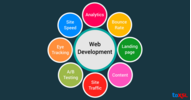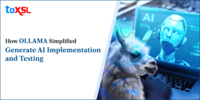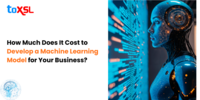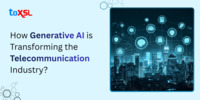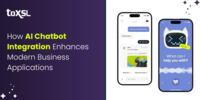- Nov 12, 2025
Share this post on:
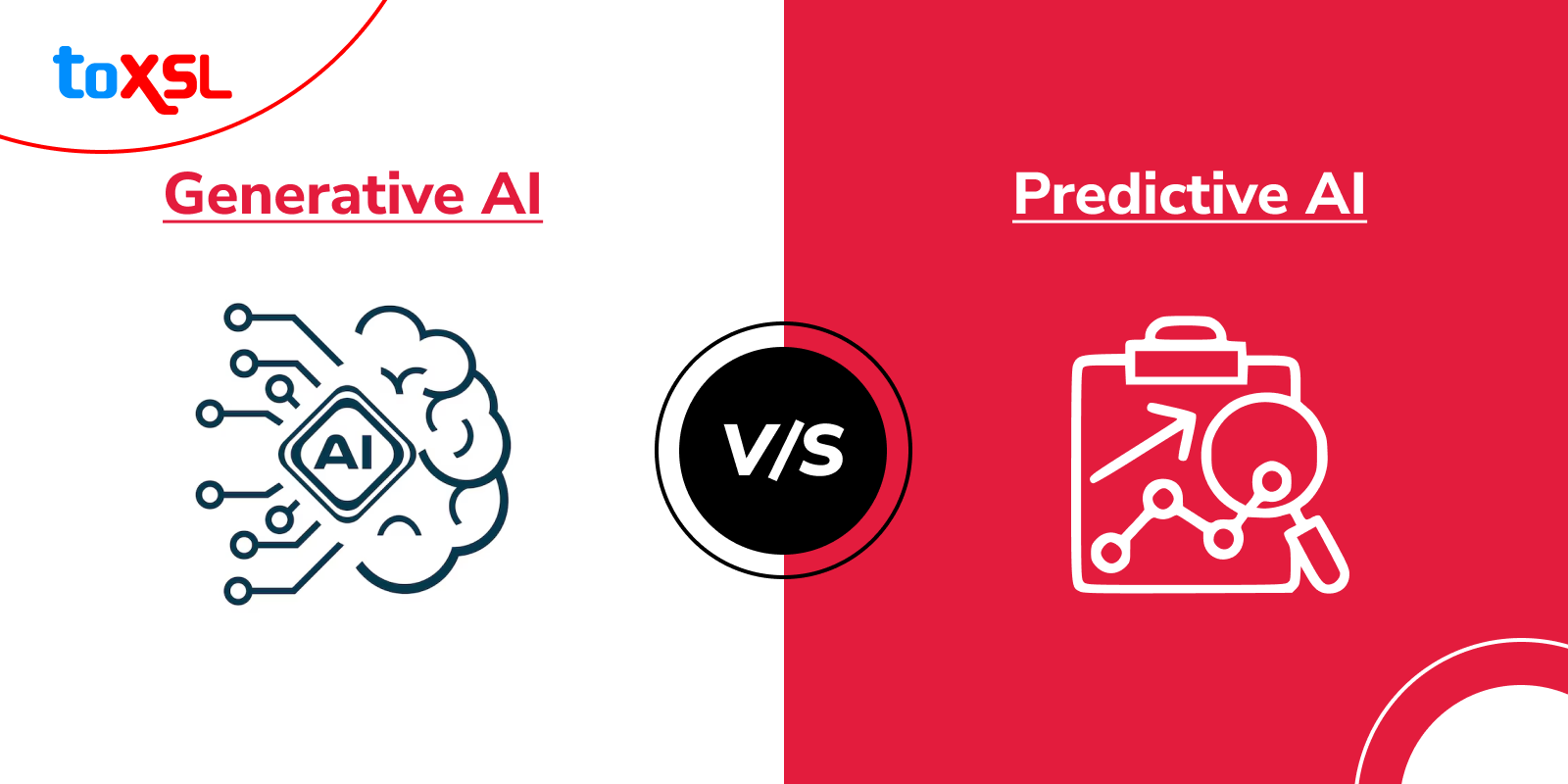
Artificial intelligence has come a long way and made significant advancements since the first successful AI program was written in 1951 at the University of Oxford. The evolution of AI continued with breakthroughs in machine learning and deep learning, leading to IBM's Deep Blue defeating chess champion Garry Kasparov in 1997 and IBM Watson winning Jeopardy in 2011.
According to AuthorityHacker, 35% of businesses have adopted AI, and 77% of devices have some form of AI integrated into them. Moreover, by 2030, AI is estimated to contribute $15.7 trillion to the global economy. As per a report from National University, in the next three years, 63% of organizations might adopt AI globally. Also, the global AI market is estimated to grow 33% year over year and the AI market is expected to grow 120% year over year.
With the advancement in AI and its ability to analyse huge amounts of data, businesses are using AI in their businesses. There are numerous sub-fields of AI; however, two such fields that have gained massive attention are generative AI and predictive AI. Both come under AI, but what purposes do they serve? How do these technologies work?
Numerous generative AI tools have the capability to predict the future. For example, conversational AI chatbots such as ChatGPT can suggest you the next part of the song. Other AI tools like Midjourney or DALL-E can develop realistic images using natural language descriptions. Whereas there are a few code completion tools, such as GitHub Copilot, that can suggest the next few lines of the code.
But are generative AI and predictive AI the same? Well, the answer is no. Predictive AI is another class of artificial intelligence. However, it is less known than generative AI but is a powerful tool for business. Let us now dig deeper into the article and learn about the difference between the two.
What is Generative AI?
Generative AI (Gen AI) is a subfield of artificial intelligence that responds to the user’s request. Gen AI-generated content such as images, code, text, or video. These Gen AI models are trained over massive data. These models can understand user prompts and generate relevant new content that resembles, yet differs from, the original data by extracting the patterns from training data.
The majority of generative AI models are based on a foundation model, which is a kind of deep learning architecture that "learns" to produce statistically similar outputs in response to prompts. While large language models (LLMs) are frequently used as foundation models for text generation, there are also other foundation models designed for generating various types of content.
How Does Generative AI Work?
Ever used tools like ChatGPT, Midjourney, or DALL-E? If yes, then you have already experienced Gen AI. From a user's standpoint, you give the AI model the set of instructions, and it creates content based on your input. But how is it possible? Well, it ultimately comes down to two key elements: deep learning algorithms and extensive training data.
Deep learning is a branch of machine learning that uses artificial neural networks to learn and make decisions. These networks are loosely inspired by the structure of the human brain, consisting of layers of interconnected nodes that process information. A notable type of deep learning architecture is the generative adversarial network (GAN). GANs are composed of two neural networks: a generator and a discriminator.
The generator's role is to create new samples, such as images or text, that align with the patterns found in the training data it has previously encountered. Meanwhile, the discriminator evaluates these samples and tries to determine whether they are real or generated by the generator.
Throughout the training process, these two networks engage in an adversarial "game." As training progresses, the generator improves its ability to create samples that deceive the discriminator into believing they are authentic, strengthening both networks. Once the GAN is fully trained, the generator can accept prompts and generate original outputs that reflect the data it was trained on.
Overall, generative AI leverages advanced deep learning architectures and huge datasets to extract creative concepts and patterns. This combination of computational power, neural innovation, and data immersion enables generative models to produce remarkably human-like, original content across various modalities based on simple prompts.
Applications of Generative AI
The applications of generative AI are boundless, limited only by our imagination. To illustrate the technology's versatility in tackling creative and analytical challenges, here are some examples:
1. Digital Art and Design: Generative AI models like DALL-E can come up with fresh visuals and graphics that are far more creative than what most humans could think by simply describing their desired outcome in natural language. This technology is helping developers and designers break through creative barriers and push artistic boundaries like never before.
2. Voice Synthesis and Dubbing: Believe it or not, those clear voices coming from your GPS or favorite characters in a foreign film are most likely to be AI-powered these days. The latest voice models can generate human-like vocals on demand in any language.
3. Film and Video Game Development: Generating realistic CGI environments, characters, and effects has long consumed precious time and budgets in the entertainment business. Now, with AI taking over the heavy lifting on those tasks, creators can shift their focus from boring tasks to more creative ones like storytelling and accelerate production time.
4. Software Development: Generative AI algorithms can automatically write new code, debug programs, and optimize existing codebases. This automation streamlines tasks that have traditionally demanded extensive manual effort from developers.
5. Synthetic Data Generation: Generative AI can produce synthesized datasets and create fabricated "synthetic" datasets that statistically match real data without directly copying it. As they do not rely on the use of sensitive personal information, they can train AI systems effectively while better preserving privacy.
What is Predictive AI?
Predictive AI uses machine learning algorithms to recognize the data patterns and predict future outputs. It extracts information from the data and makes accurate predictions about the most upcoming event or ongoing trends. These models improve the speed and accuracy of predictive analytics and are commonly used for business forecasting. Predictive AI helps in projecting sales, estimating demand for products or services, personalizing customer experiences, and optimizing logistics. In essence, predictive AI enables organizations to make well-informed decisions about their next business moves.
How Does Predictive AI Work?
Many predictive analytics applications involve inputting structured data, such as sales figures, sensor readings, and financial records, into machine learning algorithms like regression or decision trees. These algorithms check all historical correlations between variables that led to specific results. The identified patterns inform quantitative models that predict events under new conditions.
For instance, an algorithm can analyze a bank's customer data to identify the behaviors of previous loan defaulters. These indicators help construct a model that assesses the profiles of new applicants to predict their repayment risk levels and determine loan eligibility.
The accuracy of predictive AI is significantly influenced by the quality and quantity of training data. As models process more relevant and clean data over extended periods, their precision improves, refining the correlations. Predictions become increasingly reliable as successful outcomes accumulate.
Here are several key areas where predictive AI is applied:
1. Predictive Maintenance: By monitoring data such as vibration, temperature, and other sensor readings from machinery, predictive AI identifies equipment at risk of failure, allowing for proactive servicing and minimizing downtime.
2. Financial Forecasting: Predictive analysis of markets and economic factors offers investors deep insights, helping them identify the right times to trade assets that can give them maximum returns.
3. Healthcare Analytics: These AI models evaluate patient health records to develop personalized healthcare plans that enhance results. Additionally, these models also forecast hospital requirements.
4. Recommender Systems: Platforms like Netflix and Spotify utilize predictive models to recommend personalized content that aligns with users’ preferences, based on their viewing and listening histories.
Conclusion: What does The Future Hold?
Artificial intelligence is changing how businesses work, making them more effective and efficient. However, we can never truly predict the future, but by observing today’s market, we can expect to see further adoption of AI by most businesses. For small businesses, AI can be a game-changer. Also, it is anticipated that AI is going to create new jobs, eliminating the manual work.
Are you interested in taking your business forward with the help of artificial intelligence? Look no further than ToXSL Technologies. We are a leading software app development company, helping businesses integrate artificial intelligence with their existing systems. With over 12 years in business, we have solidified our reputation as a leading service provider of custom software solutions for businesses of all sizes.
So, why wait? Contact our experts and understand how we can help you expand your business with the help of our artificial intelligence solutions.
FAQs
Q1. What is the main difference between Generative AI and Predictive AI?
A: Generative AI creates new content such as text, images, or code, based on training data. Predictive AI, on the other hand, analyzes existing data to make future predictions or decisions. Generative AI is creative, while Predictive AI is analytical.
Q2. Which industries commonly use Generative AI and Predictive AI?
A: Generative AI is widely used in content creation, design, marketing, and entertainment. Predictive AI is common in finance, healthcare, e-commerce, and logistics where forecasting and decision-making are critical. Both have valuable use cases across various industries.
Q3. Can Generative AI and Predictive AI be used together?
A: Yes, they can complement each other. Predictive AI can analyze trends, while Generative AI can use those insights to create personalized content or solutions. Together, they offer smarter, more adaptive AI-powered experiences.





